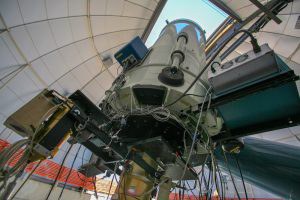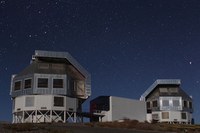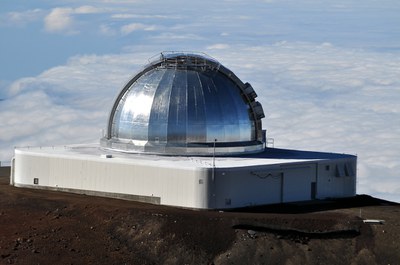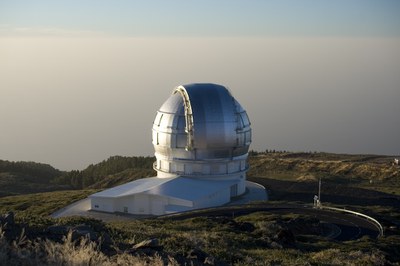Facilities
 Swope - LCO
Swope - LCO
The Henrietta Swope 40-inch telescope at Las Campanas Observatory. Equipped with an e2V CCD camera and standard Sloan, Johnson and Cron/Cousins filters, the Swope has been the photometric "workhorse" of the Carnegie Supernova Project for more than a decade. With over 3,000 nights of data, the photometric system is very well understood and the pipeline for reducing the raw data to final light-curves is well-established.
POISE uses the Swope primarily for photometric screening of new supernova candidates discovered by rolling surveys such as ZTF and ATLAS. Once a candidate passes our criteria, the Swope continues to monitor the light-curves in several filters, giving us the earliest constraints on the infant explosion.
 Magellan Baade - LCO
Magellan Baade - LCO
The 6.5-meter Baade telescope has the spectroscopic instruments used to follow-up candidates that have been screened by the Swope telescope. The Inamori Magellan Areal Camera and Spectrograph (IMACS) is used to obtain optical specta of our supernovae. The Folded port InfraRed Echellette (FIRE) spectrograph is used to obtain near-infrared spectra.
Magellan is classically scheduled through the Carnegie Observatories telescope allocation committee and therefore lacks the target of opportunity capabilities necessary for the earliest follow-up observations.
 NASA Infrared Telescope Facility (IRTF)
NASA Infrared Telescope Facility (IRTF)
IRTF is a 3.2 meter telescope located at Mauna Kea, Hawaii. We use the SpeX instrument to make spectroscopic follow-up observations of our candidates in the NIR. Being in the Northern hemisphere, it is suitable for observing our more Northern targets.
IRTF is classically scheduled and therefore lacks the target of opportunity capabilities necessary for the earliest follow-up observations.
 Gran Telescopio Canarias (GTC)
Gran Telescopio Canarias (GTC)
The GTC telescope is a 10-m telescope located on the Island of La Palma in the Canary Islands. We make use of its OSIRIS spectrograph for doing optical follow-up and EMIR for NIR photometric and spectroscopic observations of our POISE targets. Located in the Northern hemisphere, it is most suitable for our more Northern targets.
GTC has queued scheduling and we have soft ToO time for catching the early behavior of our young targets.
 Gemini South
Gemini South
Gemini South is a 10-m telescope located at Cerro Pachon in Chile. We have been awarded time on the NIR spectrograph Flamingos-II to obtain late-time NIR spectroscopy of a subset of our POISE candidates. Gemini South is ideally situated for our Southern objects.
 ARC 3.5m at Apache Point Observatory
ARC 3.5m at Apache Point Observatory
The ARC 3.5m telescope is located at Apache Point Observatory in the Sacramento Mountains of south-central New Mexico. We make use of both the Dual Imaging Spectrograph (DIS) and the newly re-commissioned KOSMOS spectrograph to gather optical spectra during our follow-up of POISE targets. We occasionally use TripleSpec to take NIR spectra of brightest, nearby targets as well. The ARC 3.5m is classically scheduled through the University of Oklahoma's time allotment as members of the Astrophysical Research Consortium, and is ideal for extended follow-up of northern targets.